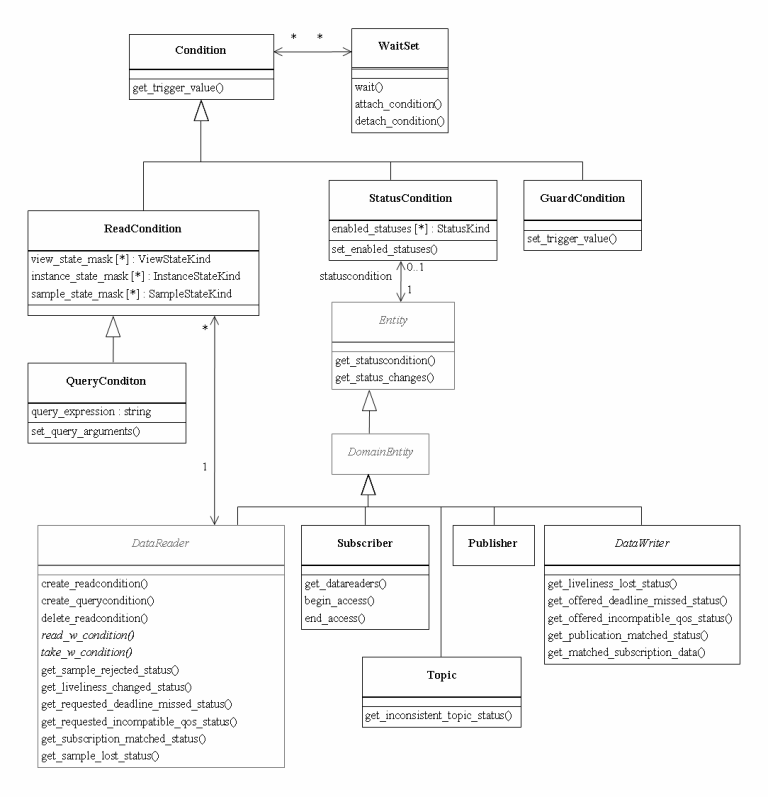Conditions and WaitSets
Conditions and WaitSets provide another way for Connext DDS to communicate status changes (including the arrival of data) to your application. While a Listener is used to provide a callback for asynchronous access, Conditions and WaitSets provide synchronous data access. In other words, Listeners are notification-based and Conditions are wait-based.
A WaitSet allows an application to wait until one or more attached Conditions becomes true (or until a timeout expires).
Briefly, your application can create a WaitSet, attach one or more Conditions to it, then call the WaitSet’s wait() operation. The wait() blocks until one or more of the WaitSet’s attached Conditions becomes TRUE.
A Condition has a trigger_value that can be TRUE or FALSE. You can retrieve the current value by calling the Condition’s only operation, get_trigger_value().
There are three kinds of Conditions. A Condition is a root class for all the conditions that may be attached to a WaitSet. This basic class is specialized in three classes:
- GuardConditions are created by your application. Each GuardCondition has a single, user-settable, boolean trigger_value. Your application can manually trigger the GuardCondition by calling set_trigger_value(). Connext DDS does not trigger or clear this type of condition—it is completely controlled by your application.
- ReadConditions and QueryConditions are created by your application, but triggered by Connext DDS. ReadConditions provide a way for you to specify the DDS data samples that you want to wait for, by indicating the desired sample-states, view-states, and instance-states1These states are described in See "The SampleInfo Structure"..
- StatusConditions are created automatically by Connext DDS, one for each Entity. A StatusCondition is triggered by Connext DDS when there is a change to any of that Entity’s enabled statuses.
Figure 7 shows the relationship between these objects and other Entities in the system.
Figure 7 Conditions and WaitSets

A WaitSet can be associated with more than one Entity (including multiple DomainParticipants). It can be used to wait on Conditions associated with different DomainParticipants. A WaitSet can only be in use by one application thread at a time.
© 2016 RTI